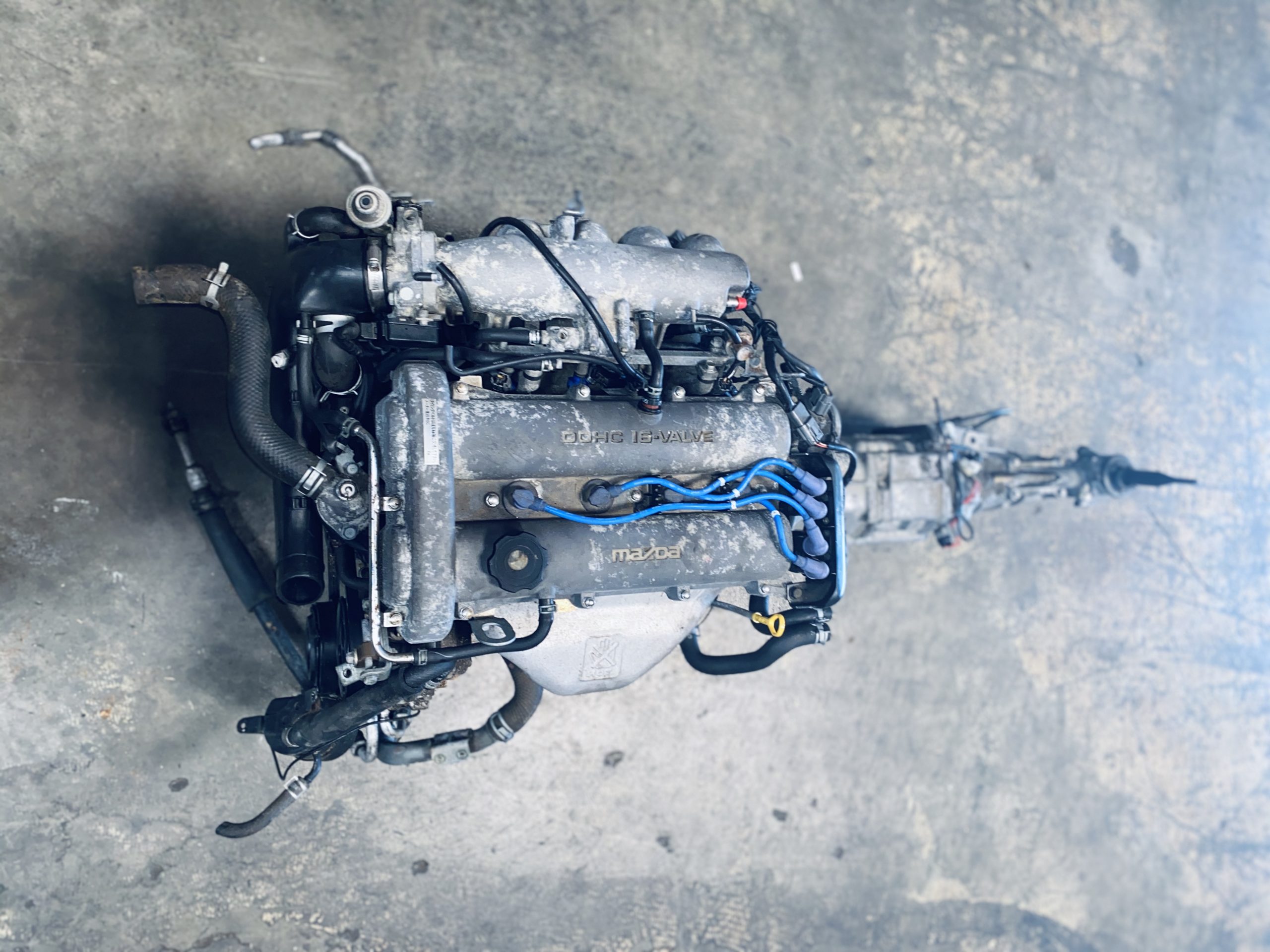


This includes the cam angle sensor, coolant intake pipes, flywheel/clutch assembly, various covers and brackets, cam gears, water pump, and timing belt tensioner, etc. Since the 1.8 is really just a stretched 1.6, most everything on the front and back of the motor will interchange between the them. Unlike the 1.6, the auto trans version of the 1.8 was not changed at all. It has the same rods, same oil-cooled pistons, same oil passages, same head design, same HLA's and same crank design. The 1.8 is the same design and is just as robust as the 1.6. The stroke was also increased to 85mm (both the 1.6 and 1.8 DOHC have the same 221.5mm block deck height and 134mm head height). It is also a ‘B’ family member but has a longer bore spacing to accommodate the larger 83mm pistons. In 1994 the need to meet emissions standards and to confront cries for more power in the Miata was answered by using the 1.8 DOHC motor that has been in the Protege since 1990. The GTX rods are no longer available new from Mazda and the Miata pieces supercede it. They weight approx 580 grams (w/bolts and nuts) vs the approx 540 grams of the Miata rod. They have a thicker beam, thicker small end and larger size bolts. The rods used in the 88-89 323GTX turbo are beefier. The pistons that were available for the 1.6 B6P were the 323 GTX 7.8:1 with a heavy dish (left), the Miata automatic 9.0:1 with a moderate dish (middle) and the Miata 5-speed 9.4:1 with a shallow 1mm dish (right) The 1.6 DOHC motor lived on in the Mercury Capri and XR2 until 1995. The pre-91 motors had a 22mm crank snout while the late 1991 and later had 27mm crank snouts. In 1991 a running change was made to the crank design from repeated failures of the pulley keyway. The tradeoff is a less peak HP rating of 100. These changes were done for the automatic version to gain torque at a lower rpm and minimize detonation from the torque eating trans. The automatic transmission version of the 1.6 DOHC engine has lower compression pistons to 9.0:1 and the camshafts have less duration. (how many NA motors do you know have oil spray cooling for the pistons).

This means that the NA version of the motor is quite over engineered for its applications. It mainly differs from the turbo counterpart in higher compression pistons (to 9.4:1), lighter connecting rods and a lighter flywheel. The 116 HP Miata 1.6 DOHC motor from 1990-1993 is a normally aspirated version of that 323 turbo engine. See SSS Automotive site from Australia for B6T tidbits. A stronger web stiffened block and oil spray cooled pistons were among the changes. Because of the severe duty that motor could see many enhancements were made to it for reliability reasons. A DOHC head was designed for the 1.6 liter for the 1988 323 GTX turbo. The 1.6 liter version has as large a bore as the block can accommodate and cannot really have it's displacement increased much more, in fact, enlarging the bore beyond +1mm is not advised. The primary example of the early ‘B’ motors in the USA came here in the GLC as a 1.5 liter SOHC, later upped to 1.6 liters for the 323 in the mid 80’s (78x83.6mm). It was primarily used oversees but did come to the USA for a short stint in the Ford Festiva (other markets got a DOHC 1.3). The ‘B’ family starts with a 1.3 liter SOHC. They are grouped into engine families, ‘B’, ‘F’, 'Z' and ‘G’. There are four basic types of 4 cylinder piston motors that Mazda currently produces for the US market. Like most auto manufacturers Mazda has a lot of commonality between engines. Mazda 4 cylinder Engine History and Interchangability Guide


 0 kommentar(er)
0 kommentar(er)
